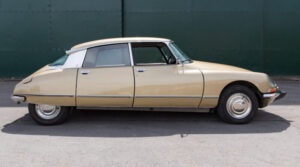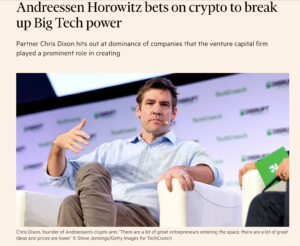After the Presentation

School of Architecture, University of Liverpool, degree-day afternoon.
Quote of the Day
“You go Uruguay and I’ll go mine.”
- Groucho Marx (in Animal Crackers)
Musical alternative to the morning’s radio news
Randy Newman | Louisiana 1927
Link
Long Read of the Day
Why Doctors hate their computers
Fabulous New Yorker essay by Atul Gawande.
My hospital had, over the years, computerized many records and processes, but the new system would give us one platform for doing almost everything health professionals needed—recording and communicating our medical observations, sending prescriptions to a patient’s pharmacy, ordering tests and scans, viewing results, scheduling surgery, sending insurance bills. With Epic, paper lab-order slips, vital-signs charts, and hospital-ward records would disappear. We’d be greener, faster, better.
But three years later I’ve come to feel that a system that promised to increase my mastery over my work has, instead, increased my work’s mastery over me. I’m not the only one. A 2016 study found that physicians spent about two hours doing computer work for every hour spent face to face with a patient—whatever the brand of medical software. In the examination room, physicians devoted half of their patient time facing the screen to do electronic tasks. And these tasks were spilling over after hours. The University of Wisconsin found that the average workday for its family physicians had grown to eleven and a half hours. The result has been epidemic levels of burnout among clinicians. Forty per cent screen positive for depression, and seven per cent report suicidal thinking—almost double the rate of the general working population.
Something’s gone terribly wrong. Doctors are among the most technology-avid people in society; computerization has simplified tasks in many industries. Yet somehow we’ve reached a point where people in the medical profession actively, viscerally, volubly hate their computers.
This is long, long but worth every minute. Gawande writes beautifully about medicine, but this is also one of the most insightful pieces I’ve read about the institutional impact of software.
What’s going on in China?
From the (really impressive) Tech newsletter put out by Tortoise Media:
In the most recent data, youth unemployment in China reached 19.9 per cent, an historically high rate. A faltering birth rate is being compounded by record unemployment and Tencent has not been exempt from the wave of layoffs that have swept the global technology sector. The company reported that – alongside its first ever fall in sales – it also saw the first quarterly drop in the size of its workforce, which fell by 4.7 per cent. China’s young, dynamic and technologically savvy workforce is being alienated. Its population is ageing, and the rewards of globalism on which it has relied in the past are dwindling to nothing. At the centre of its once burgeoning technology sector is Tencent.
Hmmm… There’s trouble ahead for Xi Jinping.
About that Citroen DS19…
Some time ago I wrote that when we’re in France I’m always on the lookout for a DS19 that’s been carefully restored. We didn’t see any this year, but one lives in hope.
And then, mirabile dictu!, a generous reader pointed me at this:

A DS19 that has not only been beautifully restored but electrified.
Electrogenic is a company formed by Steve Drummond and Ian Newstead, based near Oxford, specialising in converting classics to electric power. The pair have previously electro-converted a Triumph Stag and a Morgan Plus 4.
“Repowering classic cars with all-electric drive brings a number of benefits, from ease of use to reliability and performance gains. But with our conversions, the aim is always to enhance the original characteristics of the car. In this respect, the Citroën DS was ideally suited to an electric conversion – the silent powertrain adds to the serene driving experience and fits perfectly with the character of the car,” said Drummond at the unveiling of this, the DS Electrogenic.
The thing about the DS19 was that it was originally supposed to have an innovative air-cooled six cylinder engine. But,
Budget hang-ups at Citroën meant that the planned air-cooled flat-six engine (let’s sit back, quietly, and reflect upon that for a moment…) was binned. In the end, the DS used a mildly revised version of the old Light 15 ‘Traction Avant’ 1.9-litre four-banger. Ever after, the DS was an astonishing car in search of an appropriate engine.
Well, now it’s an astonishing car with a proper electric motor.
My commonplace booklet
Words of Advice to Motorists
“At the rise of the hand of policeman, stop rapidly. Do not pass him or otherwise disrespect him. When a passenger of the foot hove in sight, tootle to him melodiously at first.
If he still obstacles your passage, tootle him with vigour and express by word of mouth the warning, Hi, hi’.
Beware the wandering horse, that he shall not take fright as you pass him. Do not explode the exhaust box at him. Go soothingly by, or stop by the roadside till he pass away.
Give big space to the festive dog that makes sport in the roadway. Avoid entanglement of dog with your wheel spokes. Go soothingly on the grease-mud, as there lurk the skid demon. Press the brake of foot as you roll around the corners to save the collapse and tie-up.”
- Advice in an English-language newspaper in Tokyo.
This Blog is also available as a daily email. If you think that might suit you better, why not subscribe? One email a day, Monday through Friday, delivered to your inbox. It’s free, and you can always unsubscribe if you conclude your inbox is full enough already!



